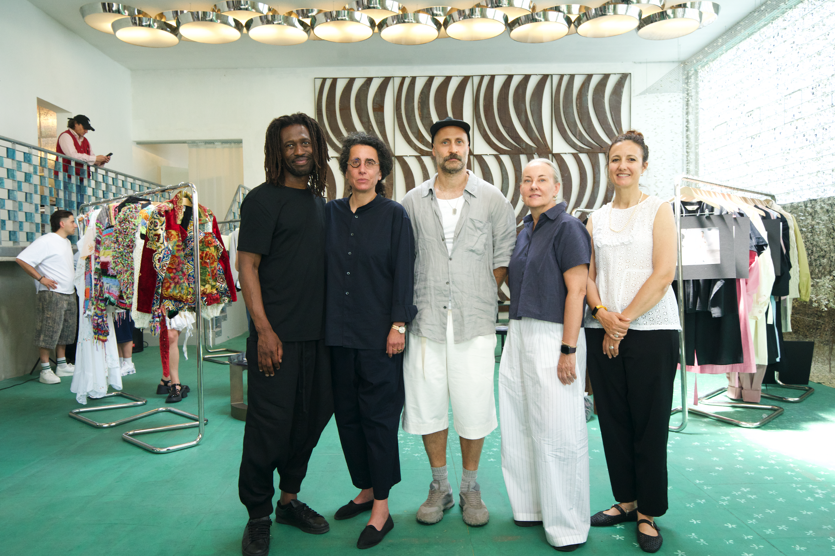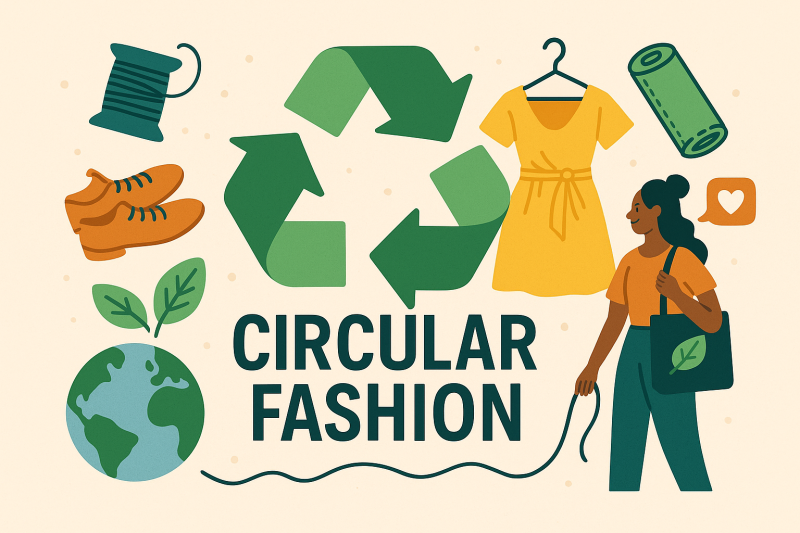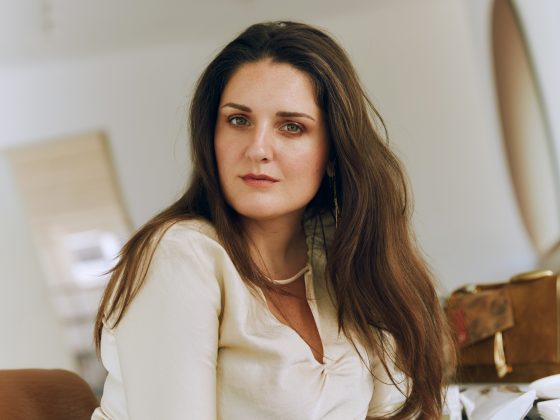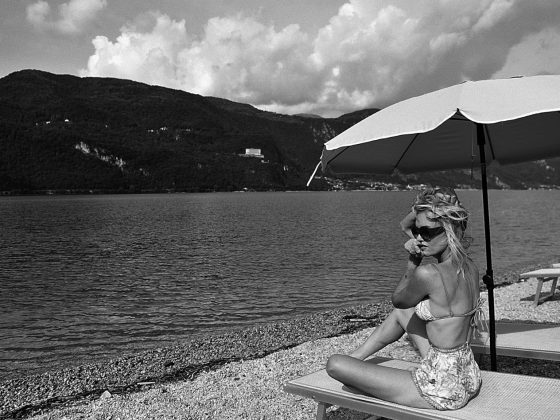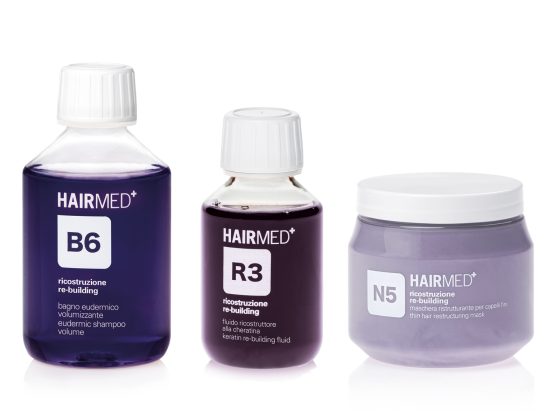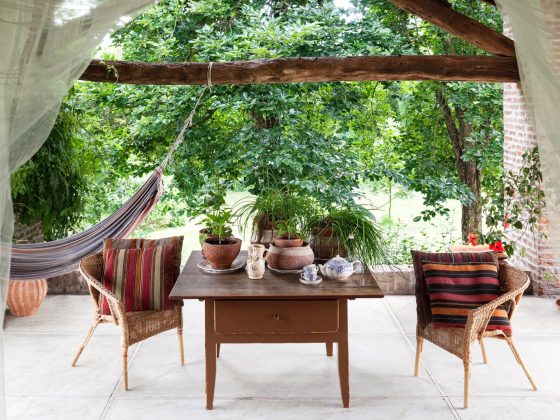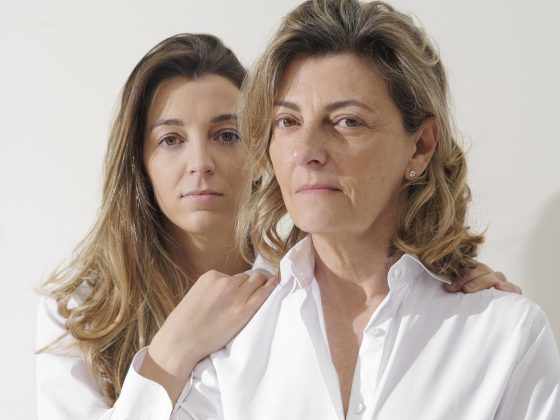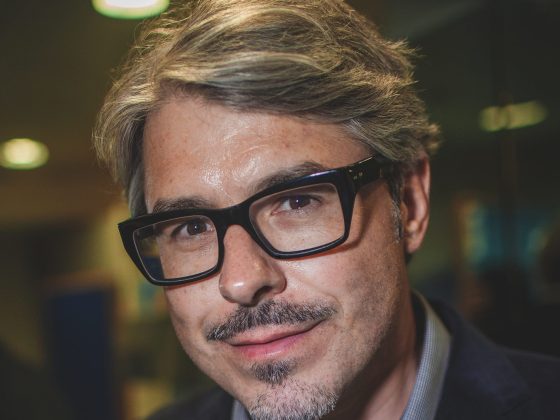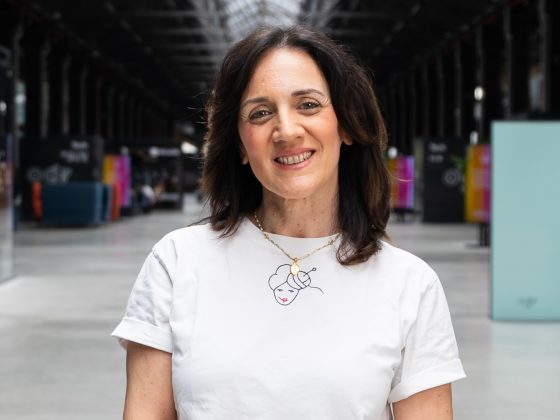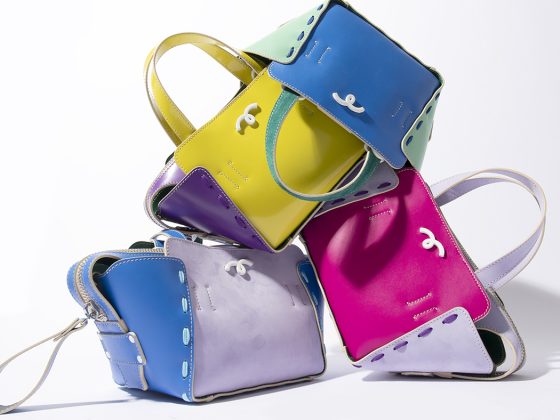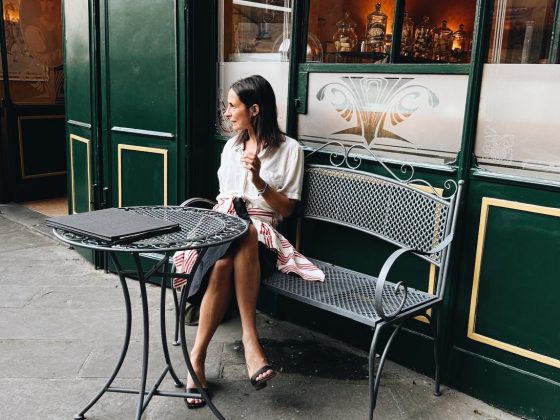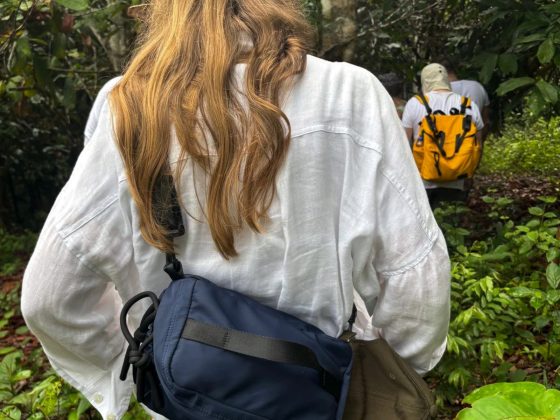Born in India through a collaboration between Reliance Industries Limited, the United Nations, and Lakmé Fashion Week, the R|Elan™ Circular Design Challenge (CDC) is now one of the leading global accelerators dedicated to young designers and entrepreneurs aiming to innovate fashion through a circular lens. With the goal of promoting sustainable practices throughout the textile supply chain, the program offers mentorship, visibility, and market access, supporting a new generation of creatives committed to redefining the boundaries of the fashion system.
In this edition, the CDC has strengthened its international outlook through a special partnership with the Sozzani Foundation, which co-hosted the jury for the 2025 European selection. Behind closed doors, on June 24, in the Milanese foundation’s space, a selected group of designers from across the EU presented their collections based on circular design principles, hoping to secure a spot among the global finalists.
An exceptional jury evaluated the projects, featuring authoritative voices from the industry, including Sara Sozzani Maino, Andrea Rosso, Elisa Pervinca Bellini, Leila Palermo, and Mossi Traoré.
Gaiazoe interviewed Mr Rakesh Bali – Senior Vice President & Head Marketing RIL:
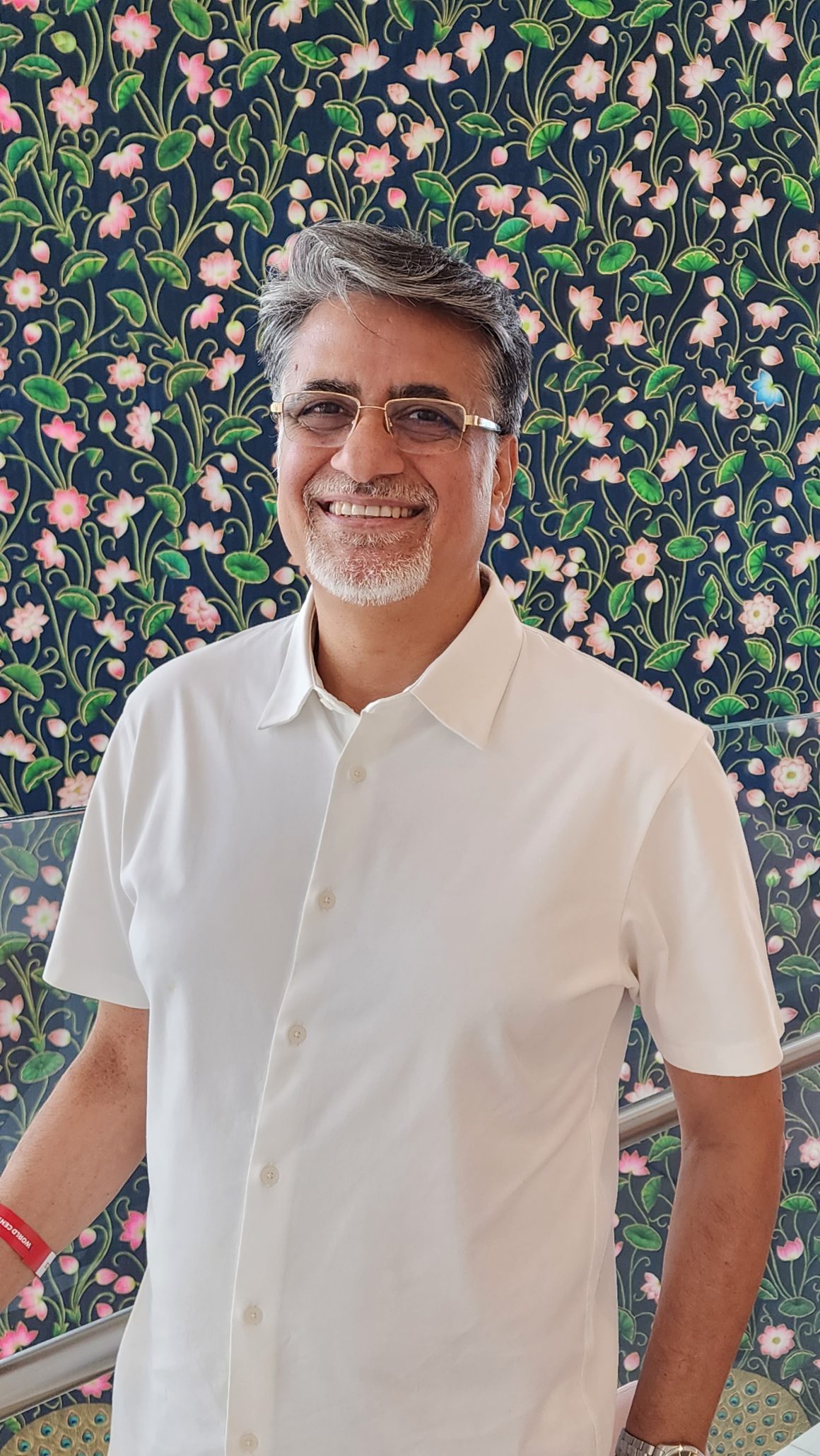
A strategic vision with the support of Italian experts
The Circular Design Challenge has become a global platform for circular innovation in fashion. In your opinion, what have been its most significant achievements so far, and what challenges still lie ahead for a true transition towards circularity in the industry?
Over the past six years, the R|Elan Circular Design Challenge (CDC)—an initiative by Reliance Industries Limited in partnership with Lakmé Fashion Weekend the United Nations in India—has evolved into a pioneering global platform that identifies and empowers breakthrough innovators working at the intersection of design, sustainability, and circular business models.
With the backing of Reliance’s strong sustainability vision and industry leadership, CDC has successfully unearthed high-impact, scalable solutions that reduce waste and advance circularity in fashion. It goes beyond recognition by offering tangible support—mentorship from global experts, seed funding, and access to key industry platforms. The credibility and reach of Reliance, combined with the cultural influence of Lakmé Fashion Week and the global perspective of the UN, have made CDC a powerful launchpad for young changemakers. Our most significant achievement has been building a robust talent pipeline that is now actively shaping the global conversation on sustainable fashion.
That said, the path to a fully circular fashion industry still faces challenges. Scaling innovations, embedding circular practices across complex supply chains, and transforming consumer behavior demand systemic change. For circularity to become the norm, there must be stronger alignment between creative innovation and the entire fashion value chain.
Platforms like CDC—powered by the collective strength of Reliance Industries, Lakmé Fashion Week, the UN in India and international partners—are uniquely positioned to bridge this gap and drive meaningful, long-term transformation towards a circular and sustainable fashion future.
The collaboration with Fondazione Sozzani and the expansion into Europe mark a new phase for the CDC. What is the strategic vision behind this international outreach, and what are your expectations from this year’s shortlisted European talents?
This is our 3rd year in Europe but the first collaboration with Fondazione Sozzani. We had the pleasure of hosting Sara Sozzani Maino in India, at our final jury of 2024. Her experience of India & the talent coming from this region became the foundation of this collaboration. Europe has been a leader in policy, innovation, and consumer awareness around sustainability. By expanding into this region, we’re creating a platform where ideas and talent from different parts of the world can cross-pollinate. It’s also a signal that circularity is not regional, it’s a global priority.
The CDC places strong emphasis on criteria such as material and process innovation, closed-loop systems, social impact, and alignment with the UN SDGs. How do these principles get marked during the jury process, and which pillars of the jury criteria do you feel are the most vital for the development of circularity globally right now?
The CDC jury process uses a detailed evaluation rubric where each submission is assessed across multiple pillars: innovation in material and processes, potential for closed-loop integration, business viability, and contribution to relevant SDGs—especially SDG 12 (responsible consumption & production) and SDG 13 (climate action). It’s difficult and unfair to narrow down to certain vital areas of development. Global designers have global perspectives to circularity to our evaluation criteria becomes an unbiased opportunity for all. We are also one of the few platforms that include social impact as part of the circular economy framework.
The global fashion agenda needs to move from dialogue to action
Being part of a program like the CDC, which includes mentorship and market access, is a unique opportunity. How have past winners of the CDC prize flourished post win?
R|Elan Circular Design Challenge functions less as a one-time award and more as an incubator. For our winners and runner-ups, the journey truly begins after the prize. Beyond the cash award, the program offers tailored mentorship by Orsola De Castro and the team at Estethica, along with strategic exposure across media, retail, and international platforms. We’re proud to position CDC as a springboard that accelerates the growth of circular design talent and connects them meaningfully to the wider industry. Many of our past winners have seen significant growth after CDC, from participating in global fashion weeks and exhibitions to securing collaborations with established brands and institutions. More importantly, they’ve gained clarity on how to scale responsibly, communicate their value proposition, and build lasting impact.
Winning the CDC is an important international recognition. What message do you want to convey to the fashion world through this prize, and how do you envision the development of these young brands over the next 5 years?
The message is simple: the global fashion agenda needs to move from dialogue to action, from commitment to urgent implementation on the ground and consequently, the future of fashion will be built by those who can combine creativity with responsibility. Winning CDC is not just about being a promising designer, it’s about being a changemaker who can reimagine fashion systems. Over the next five years, we expect CDC alumni to emerge as strong voices in the global sustainability space, not just through their collections, but through collaborations, advocacy, and innovation. Our role is to continue nurturing them with the right tools, connections, and platforms to make that possible.
Few questions to the winner Martina Boero
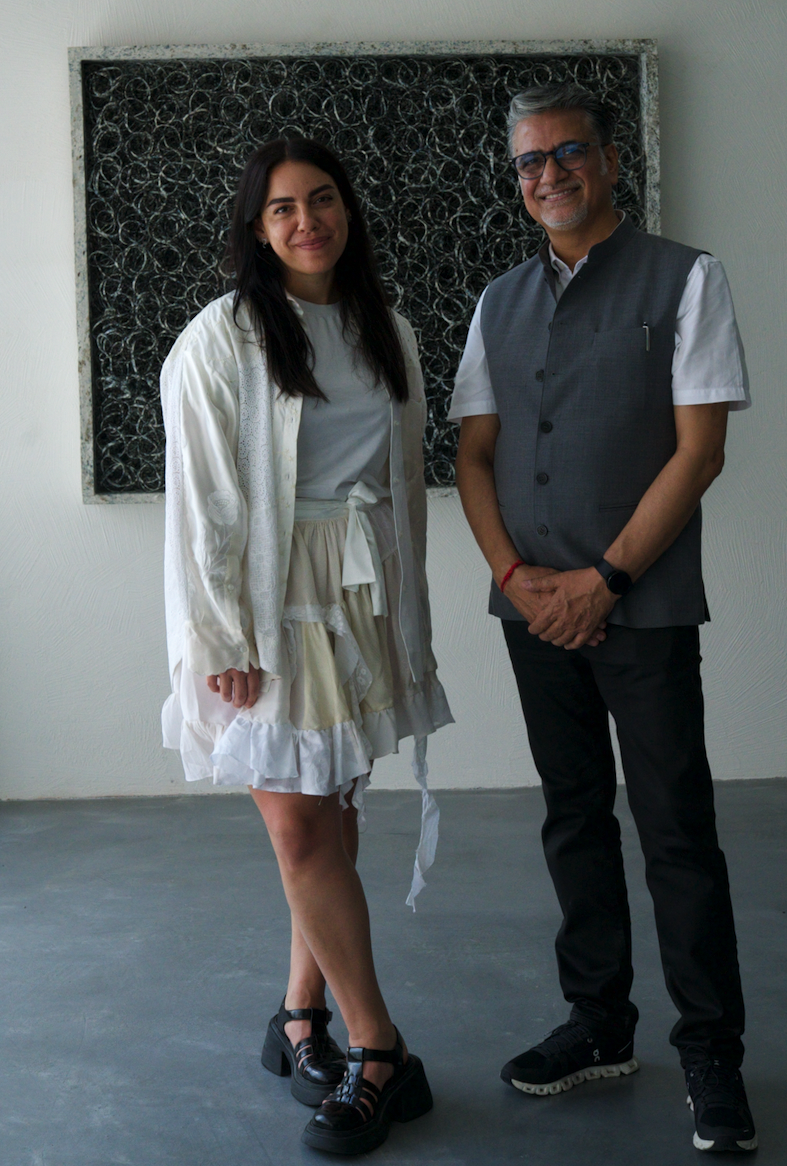
Q1. The CDC places strong emphasis on criteria such as material and process innovation, closed-loop systems, social impact, and alignment with the UN SDGs. How does your collection reflect these principles, and which aspect of your work do you feel is the most groundbreaking?
With Cavia, I create collections that are made with 100% upcycled materials, the core of Cavia is handmade knitwear. For the collection I transport antique, Italian traditions along with modern and new to create each piece. I really focus on how the garment fits, to ensure the customer feels comfortable and can wear the garment over and over again. Each piece includes a mini passport where I wrote down the hours that it took to make and the person who made the handmade knitwear, to create a connection with Cavia and the customer. I believe emotions are a big part of whether you keep an item or not, if the wearer feels connected to the garment they will be more likely to keep it.
Q2. Being part of a program like the CDC, which includes mentorship and market access, is a unique opportunity. How is this experience reshaping your approach to design and your role as a designer in today’s society?
One thing no one talks about when having an emerging brand is that you don’t have to just be great in creativity but you have to know how to build your business. You need to have some knowledge about finance, how to create a business plan, and even the sale campaign such as prices and linesheets. By entering in this program I would love to understand how another country and another market like India can think about how to grow my brand because I think that it’s a great opportunity, not just to show my collection but also to understand the market.
Q3. Winning the CDC EU Jury is an important international recognition. What message do you want to convey to the fashion world through your work, and how do you envision your future path in promoting circular innovation?
I have a consulting studio and I work with a lot of brands in Milan. One thing I realised is that they didn’t understand that right now it’s not that difficult to create an upcycle collection , we create so much and have access to a lot of deadstock materials and fabrics/ yarns that have already been produced for other clients/brands. What I would love to see in the future is that we don’t talk anymore about sustainability, that it’s something that is really part of a brand, not just about business. I think we are losing how spontaneous fashion was, we used to just wear something that had meaning, right now it’s more of wearing the thing of the season which I really don’t like. With my collection, I want to create timeless pieces, of course we will have seasonality and I do follow trends but I aim to create something that feels like it yours and you don’t want to change it every season, which I think that other brands in general should also think about.
(Interview by Viviana Musumeci, founder @gaiazoe.life)
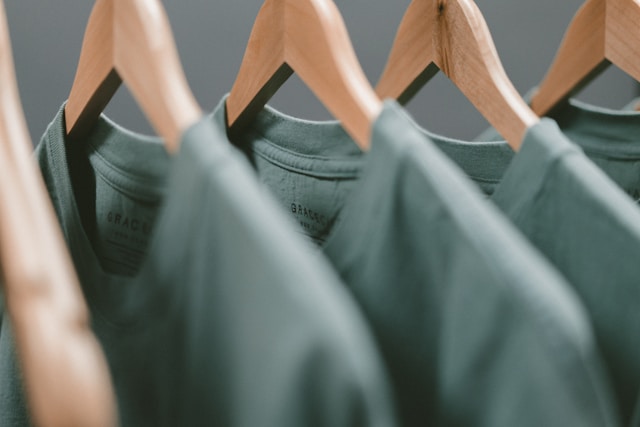
Italian Version
Circular Design Challenge 2025: i nuovi talenti della moda sostenibile in Europa
Nato in India grazie a Reliance Industries Limited, in collaborazione con le Nazioni Unite e la Lakmé Fashion Week, il R|Elan™ Circular Design Challenge (CDC) è oggi uno dei principali acceleratori globali dedicati ai giovani designer e imprenditori che vogliono innovare la moda in chiave circolare. Con l’obiettivo di promuovere pratiche sostenibili lungo tutta la filiera tessile, il programma offre mentorship, visibilità e accesso al mercato, sostenendo una nuova generazione di creativi impegnati a ridefinire i confini del fashion system.
In questa edizione, il CDC ha consolidato la sua vocazione internazionale grazie a una speciale collaborazione con Fondazione Sozzani, che ha co-ospitato la giuria della selezione europea 2025. A porte chiuse, lo scorso 24 giugno, negli spazi della fondazione milanese, un gruppo selezionato di designer provenienti da tutta l’UE ha presentato le proprie collezioni fondate su principi di design circolare, nella speranza di conquistare un posto tra i finalisti globali.
A valutare i progetti, una giuria d’eccezione composta da voci autorevoli del settore, tra cui Sara Sozzani Maino, Andrea Rosso, Elisa Pervinca Bellini, Leila Palermo e Mossi Traoré.
Gaiazoe ha intervistato il Sig. Rakesh Bali – Senior Vice President & Head Marketing di RIL:
Il Circular Design Challenge è diventato una piattaforma globale per l’innovazione circolare nella moda. Secondo lei, quali sono stati i suoi risultati più significativi finora, e quali sfide restano ancora da affrontare per una vera transizione verso la circolarità nel settore?
Negli ultimi sei anni, il R|Elan Circular Design Challenge (CDC) – un’iniziativa di Reliance Industries Limited in collaborazione con la Lakmé Fashion Week e le Nazioni Unite in India – si è evoluto in una piattaforma globale all’avanguardia, capace di identificare e supportare innovatori rivoluzionari che operano all’intersezione tra design, sostenibilità e modelli di business circolari.
Grazie alla forte visione sulla sostenibilità e alla leadership industriale di Reliance, il CDC ha saputo far emergere soluzioni a forte impatto e potenzialmente scalabili, capaci di ridurre gli sprechi e promuovere la circolarità nella moda. Il progetto non si limita al riconoscimento, ma offre un supporto concreto: mentorship da parte di esperti globali, finanziamenti iniziali e accesso a piattaforme chiave del settore. La credibilità e la portata di Reliance, unite all’influenza culturale della Lakmé Fashion Week e alla visione globale delle Nazioni Unite, hanno fatto del CDC un trampolino di lancio potente per giovani changemaker. Il nostro risultato più significativo è stato quello di costruire un solido bacino di talenti che oggi sta contribuendo attivamente al dibattito globale sulla moda sostenibile.
Detto ciò, il percorso verso un’industria della moda pienamente circolare presenta ancora delle sfide: la scalabilità delle innovazioni, l’integrazione delle pratiche circolari lungo catene di fornitura complesse e la trasformazione dei comportamenti dei consumatori richiedono cambiamenti sistemici. Perché la circolarità diventi la norma, è fondamentale un allineamento più forte tra innovazione creativa e l’intera catena del valore della moda.
Piattaforme come il CDC – sostenute dalla forza congiunta di Reliance Industries, Lakmé Fashion Week, le Nazioni Unite in India e i partner internazionali – hanno un ruolo unico nel colmare questo divario e guidare una trasformazione concreta e duratura verso un futuro della moda circolare e sostenibile.
Una visione strategica con il supporto di esperti italiani
La collaborazione con Fondazione Sozzani e l’espansione in Europa segnano una nuova fase per il CDC. Qual è la visione strategica dietro questa apertura internazionale e quali sono le vostre aspettative rispetto ai talenti europei selezionati quest’anno?
Questa è la nostra terza edizione in Europa, ma la prima collaborazione con la Fondazione Sozzani. Abbiamo avuto il piacere di ospitare Sara Sozzani Maino in India, in occasione della giuria finale del 2024. La sua esperienza in India e l’incontro con i talenti provenienti da questa regione sono diventati il punto di partenza di questa collaborazione. L’Europa è sempre stata all’avanguardia in termini di politiche, innovazione e consapevolezza dei consumatori in ambito sostenibilità. Espandersi in quest’area significa creare una piattaforma in cui idee e talenti di diverse parti del mondo possano contaminarsi. È anche un segnale chiaro: la circolarità non è una questione regionale, ma una priorità globale.
Il CDC pone grande enfasi su criteri come innovazione nei materiali e nei processi, sistemi chiusi, impatto sociale e allineamento con gli SDG dell’ONU. Come vengono valutati questi principi durante il processo di giuria, e quali aspetti ritiene oggi più vitali per lo sviluppo della circolarità a livello globale?
Il processo di valutazione del CDC si basa su una griglia dettagliata, in cui ogni progetto viene esaminato su più pilastri: innovazione nei materiali e nei processi, potenziale di integrazione in un sistema chiuso, fattibilità del modello di business e contributo agli Obiettivi di Sviluppo Sostenibile più rilevanti – in particolare l’SDG 12 (consumo e produzione responsabili) e l’SDG 13 (azione per il clima).
È difficile – e anche poco corretto – restringere il campo ad alcune aree considerate più importanti. I designer globali portano con sé visioni globali sulla circolarità, e i nostri criteri offrono un’opportunità equa per tutti. Siamo inoltre una delle poche piattaforme che include anche l’impatto sociale all’interno del quadro dell’economia circolare.
Passare dalla teoria alla pratica
Partecipare a un programma come il CDC, che offre mentorship e accesso al mercato, è un’opportunità unica. In che modo i vincitori delle passate edizioni sono cresciuti dopo la vittoria?
Il R|Elan Circular Design Challenge non è pensato come un premio “una tantum”, ma come un vero incubatore. Per i vincitori e i finalisti, il percorso inizia davvero dopo il premio. Oltre al contributo economico, il programma offre una mentorship personalizzata con Orsola De Castro e il team di Estethica, oltre a un’esposizione strategica su media, retail e piattaforme internazionali. Siamo orgogliosi di considerare il CDC una piattaforma di lancio che accelera la crescita dei talenti del design circolare e li connette in modo concreto con il settore.
Molti vincitori delle scorse edizioni hanno registrato una crescita significativa: dalla partecipazione a fashion week ed esposizioni internazionali, alla realizzazione di collaborazioni con brand e istituzioni affermate. Ma soprattutto, hanno acquisito maggiore consapevolezza su come scalare in modo responsabile, comunicare il proprio valore e costruire un impatto duraturo.
Vincere il CDC rappresenta un riconoscimento internazionale importante. Qual è il messaggio che volete trasmettere al mondo della moda attraverso questo premio, e come immaginate lo sviluppo di questi giovani brand nei prossimi cinque anni?
Il messaggio è semplice: l’agenda globale della moda deve passare dalle parole ai fatti, dagli impegni all’implementazione concreta. Il futuro della moda sarà costruito da chi saprà coniugare creatività e responsabilità.
Vincere il CDC non significa soltanto essere un designer promettente, ma essere un changemaker capace di ripensare i sistemi della moda. Nei prossimi cinque anni, ci aspettiamo che gli alumni del CDC diventino voci forti nel panorama globale della sostenibilità, non solo attraverso le loro collezioni, ma anche attraverso collaborazioni, attività di advocacy e innovazione. Il nostro compito è continuare a nutrire questo talento con gli strumenti, le connessioni e le piattaforme giuste per renderlo possibile.
Alcune domande alla vincitrice Martina Boero
D1. Il CDC pone una forte enfasi su criteri come l’innovazione nei materiali e nei processi, i sistemi circolari, l’impatto sociale e l’allineamento con gli SDG delle Nazioni Unite. In che modo la tua collezione riflette questi principi, e quale aspetto del tuo lavoro ritieni sia il più innovativo?
Con Cavia realizzo collezioni composte al 100% da materiali upcycled; il cuore di Cavia è la maglieria fatta a mano. Per la collezione porto con me le antiche tradizioni italiane, unendole a elementi moderni e contemporanei per creare ogni singolo pezzo. Mi concentro molto sulla vestibilità del capo, affinché il cliente si senta a proprio agio e possa indossarlo più e più volte. Ogni pezzo include un mini “passaporto” in cui ho annotato le ore necessarie per realizzarlo e la persona che ha lavorato alla maglieria, per creare un legame tra Cavia e chi lo indossa. Credo che le emozioni siano una componente fondamentale nel decidere se tenere un capo o meno: se chi lo indossa si sente connesso al capo, sarà più portato a conservarlo nel tempo.
D2. Far parte di un programma come il CDC, che offre mentorship e accesso al mercato, è un’opportunità unica. In che modo questa esperienza sta cambiando il tuo approccio al design e il tuo ruolo di designer nella società contemporanea?
Una cosa di cui si parla poco quando si ha un brand emergente è che non basta essere creativamente validi: bisogna anche sapere come costruire un’impresa. È necessario avere delle conoscenze di base in ambito finanziario, saper creare un business plan, organizzare una campagna vendita, definire prezzi e creare line sheet. Entrando in questo programma, mi piacerebbe capire come un altro Paese e un altro mercato – come quello indiano – possono interpretare la crescita del mio brand, perché credo che sia una grande opportunità non solo per mostrare la mia collezione, ma anche per comprendere meglio il mercato.
D3. Vincere il CDC EU Jury rappresenta un importante riconoscimento a livello internazionale. Qual è il messaggio che vuoi trasmettere al mondo della moda attraverso il tuo lavoro, e come immagini il tuo percorso futuro nella promozione dell’innovazione circolare?
Ho uno studio di consulenza e lavoro con diversi brand a Milano. Una cosa che ho notato è che molti di loro non comprendono quanto oggi non sia poi così complicato creare una collezione upcycled: produciamo moltissimo e abbiamo accesso a una grande quantità di deadstock, materiali e filati già realizzati per altri clienti o brand. Quello che vorrei vedere in futuro è che non si debba più parlare di sostenibilità come se fosse un tema a sé, ma che diventi parte integrante dell’identità di un marchio, non solo una questione di marketing. Penso che si stia perdendo quella spontaneità che un tempo caratterizzava la moda: prima si indossava qualcosa perché aveva un significato, oggi invece si indossa ciò che è di tendenza, e questo non mi piace. Con la mia collezione voglio creare capi senza tempo. Ovviamente esisterà sempre una certa stagionalità e seguo le tendenze, ma il mio obiettivo è realizzare qualcosa che senta davvero tuo, che non ti venga voglia di cambiare ogni stagione — e penso che anche altri brand dovrebbero riflettere su questo.
(Intervista a cura di Viviana Musumeci, fondatrice di @gaiazoe.life)
